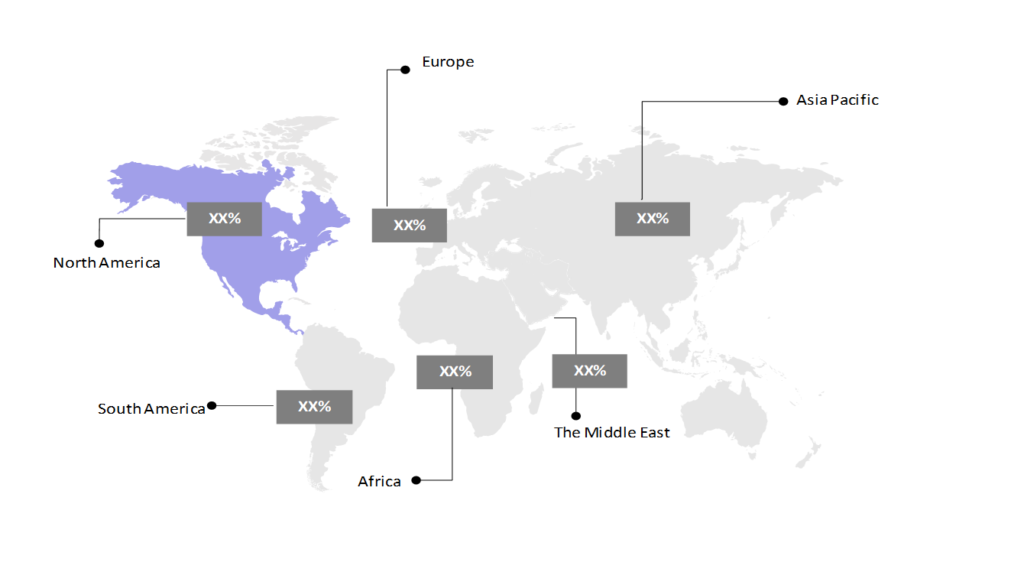Small Arms Market Insights: Size, Share, Growth Analysis & Forecast (2024-2029)
The market report provided a comprehensive analysis segmented by End User (Defense, Civil & Commercial); by Technology (Guided, Unguided); by Type (Pistol, Revolver, Rifles, Shotgun, Machine Gun, Others); by Firing System (Gas-Operated, Recoil-Operated, Manual); by Geography (North America, South America, Asia Pacific, Europe, The Middle East, Africa).
Outlook

- The small arms market is estimated to be at USD 9,580.12 Mn in 2024 and is anticipated to reach USD 11,510.32 Mn in 2029.
- The small arms market is registering a CAGR of 3.74% during the forecast period of 2024-2029.
- The small arms market includes a diverse array of firearms, such as handguns, rifles, shotguns, and submachine guns, utilized by the military, law enforcement, and civilian sectors. This market is experiencing steady growth driven by factors like military and law enforcement modernization programs, evolving warfare dynamics, and a rise in criminal violence worldwide. Additionally, the market is shaped by ongoing geopolitical shifts and technological advancements, which contribute to its dynamic nature.
Request a free sample.
Ecosystem

- The participants in the global small arms industry are always developing their strategies to preserve a competitive advantage.
- Companies are investing heavily in innovation to develop advanced firearms with features like modularity, reduced recoil, and integrated smart optics.
- Several important entities in the small armmarket include Colt CZ Group SE; Sig Sauer, Inc.; STEYR ARMS GmbH; Remington Arms Co., Inc.; Smith & Wesson Brands, Inc.; and others.
Ask for customization.
Findings
| Attributes | Values |
|---|---|
| Historical Period | 2018-2022 |
| Base Year | 2023 |
| Forecast Period | 2024-2029 |
| Market Size (2024) | USD 9,580.12 Mn |
| Market Size (2029) | USD 11,510.32 Mn |
| Growth Rate | 3.74% CAGR from 2024 to 2029 |
| Key Segments | End User (Defense, Civil & Commercial); Technology (Guided, Unguided); Type (Pistol, Revolver, Rifles, Shotgun, Machine Gun Others); Firing System (Gas-Operated, Recoil-Operated, Manual); Geography (North America, South America, Asia Pacific, Europe, The Middle East, Africa) |
| Key Vendors | Colt CZ Group SE; Sig Sauer, Inc.; STEYR ARMS GmbH; Remington Arms Co., Inc.; Smith & Wesson Brands, Inc. |
| Key Countries | The US; Canada; Mexico; Brazil; Argentina; Colombia; Chile; China; India; Japan; South Korea; The UK; Germany; Italy; France; Spain; Turkey; UAE; Saudi Arabia; Egypt; South Africa |
| Largest Market | North America |
Get a free quote.
Trends
- Modernization of Small Arms: Militaries across the globe are upgrading their small arms to enhance accuracy, lethality, and adaptability. For example, the US Army’s Next Generation Squad Weapon (NGSW) program aims to replace existing rifles and light machine guns with more advanced options. Similarly, France and Germany are investing in new infantry rifles and handguns to align with modern battlefield needs.
- Increasing Use of Laser Technology for Weapon Marking: The small arms market is seeing a shift towards laser technology for marking weapons. Laser engraving offers a precise and durable alternative to traditional stamping, which can damage polymer materials, and is effective even on very small surfaces. Manufacturers also embed metallic inserts in polymer components to enhance the clarity and permanence of markings, which highlights the move towards more advanced marking techniques in the industry.
- Emergence of 3D Printing in Small Arms Manufacturing: 3D printing is revolutionizing small arms production by offering new methods for creating weapons. This technology allows for rapid prototyping, customization, and production of components with intricate designs, which reduces both the cost and time required for traditional manufacturing methods. The Defense Distributed company has pioneered the use of 3D printing to create firearms. 3D printing enables manufacturers to produce lightweight, durable parts, optimize supply chains, and innovate quickly, which makes it a disruptive force in the small arms industry.
Speak to analyst.
Catalysts
- Change in Warfare Dynamics: The shift from traditional warfare to asymmetric and urban combat has driven increased demand for lightweight, portable, and easily maneuverable small arms. Modern conflicts often involve non-state actors and require weapons that support rapid mobility, close-quarters combat, and versatile use in diverse terrains.
- Rise in Criminal Violence Across the Globe: Increasing criminal violence and organized crime, particularly in regions like Latin America and parts of Africa, are boosting demand for small arms. For instance, the proliferation of firearms in Brazil and Mexico is largely driven by drug cartels and criminal organizations, prompting governments to arm law enforcement and private security forces with more effective weapons.
- Militarization and Modernization of Law Enforcement Personnel: Police and security forces worldwide are increasingly adopting military-grade equipment to deal with heightened threats, including terrorism and mass shootings. In the US, police departments have enhanced their arsenals with military surplus through the 1033 Program. Additionally, European nations like France have modernized their police firearms in response to terrorist attacks, which is fueling demand in the small arms market.
Inquire before buying.
Restraints
- Stringent and Varying Legal, Economic, and Political Regulations: The procurement of small arms is complicated due to a wide range of regulations that differ across countries and regions. Export controls, embargoes, and domestic restrictions, such as those under the European Union’s Common Position or the US International Traffic in Arms Regulations (ITAR), can limit market access and complicate international trade, affecting manufacturers’ ability to operate globally.
- Proliferation of Illicit Small Arms: The proliferation of illicit small arms poses a significant challenge to the small arms market. Illegally manufactured and trafficked weapons undermine legitimate sales, contribute to black market activities, and increase the risk of armed violence globally. This widespread availability of unregulated arms impacts market dynamics, driving down prices and creating an environment where illegal arms are often more accessible than legally obtained ones.
- Supply Chain Disruptions and Material Shortages: Fluctuations in the availability of raw materials like metals and polymers, as well as geopolitical factors like trade wars or sanctions, can disrupt the supply chain. Sanctions on key metal-exporting countries or disruptions caused by events such as natural disasters, political instability, or conflicts can result in delays and increased costs, which affect production timelines and profitability.
Personalize this research.
Hotspot

Explore purchase options.
Table of Contents
| 1. Introduction 1.1. Research Methodology 1.2. Scope of the Study 2. Market Overview / Executive Summary 2.1. Global Small Arms Market (2018 – 2022) 2.2. Global Small Arms Market (2023 – 2029) 3. Market Segmentation 3.1. Global Small Arms Market by End User 3.1.1. Defence 3.1.2. Civil & Commercial 3.2. Global Small Arms Market by Technology 3.2.1. Guided 3.2.2. Unguided 3.3. Global Small Arms Market by Type 3.3.1. Pistol 3.3.2. Revolver 3.3.3. Rifles 3.3.4. Shotgun 3.3.5. Machine Gun 3.3.6. Others 3.4. Global Small Arms Market by Firing System 3.4.1. Gas-Operated 3.4.2. Recoil-Operated 3.4.3. Manual 4. Regional Segmentation 4.1. North America 4.1.1. The US 4.1.2. Canada 4.1.3. Mexico 4.2. South America 4.2.1. Brazil 4.2.2. Argentina 4.2.3. Colombia 4.2.4. Chile 4.2.5. Rest of South America 4.3. Asia Pacific 4.3.1. China 4.3.2. India 4.3.3. Japan 4.3.4. South Korea 4.3.5. Rest of Asia Pacific 4.4. Europe 4.4.1. The UK 4.4.2. Germany 4.4.3. Italy 4.4.4. France 4.4.5. Spain 4.4.6. Rest of Europe 4.5. The Middle East 4.5.1. Turkey 4.5.2. UAE 4.5.3. Saudi Arabia 4.5.4. Rest of the Middle East 4.6. Africa 4.6.1. Egypt 4.6.2. South Africa 4.6.3. Rest of Africa 5. Value Chain Analysis of the Global Small Arm Market 6. Porter’ s Five Forces Analysis 6.1. Threats of New Entrants 6.2. Threats of Substitutes 6.3. Bargaining Power of Buyers 6.4. Bargaining Power of Suppliers 6.5. Competition in the Industry 7. Trends, Drivers and Challenges Analysis 7.1. Market Trends 7.1.1. Market Trend 1 7.1.2. Market Trend 2 7.1.3. Market Trend 3 7.2. Market Drivers 7.2.1. Market Driver 1 7.2.2. Market Driver 2 7.2.3. Market Driver 3 7.3. Market Challenges 7.3.1. Market Challenge 1 7.3.2. Market Challenge 2 7.3.3. Market Challenge 3 8. Opportunities Analysis 8.1. Market Opportunity 1 8.2. Market Opportunity 2 8.3. Market Opportunity 3 9. Competitive Landscape 9.1. Colt CZ Group SE 9.2. Sig Sauer Inc. 9.3. STEYR ARMS GmbH 9.4. Remington Arms Co., Inc. 9.5. Smith & Wesson Brands, Inc. 9.6. Company 6 9.7. Company 7 9.8. Company 8 9.9. Company 9 9.10. Company 10 |
Know the research methodology.
Small Arms Market – FAQs
1. What is the current size of the small arms market?
Ans. In 2024, the small arms market size is USD 9,580.12 Mn.
2. Who are the major vendors in the small arms market?
Ans. The major vendors in the small arms market are Colt CZ Group SE; Sig Sauer, Inc.; STEYR ARMS GmbH; Remington Arms Co., Inc.; Smith & Wesson Brands, Inc.
3. Which segments are covered under the small arms market segments analysis?
Ans. The small arms market report offers in-depth insights into End User, Technology, Type, Firing System, and Geography.
